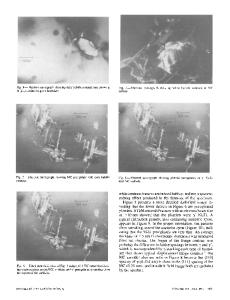Cyclic Deformation Microstructure in Heavily Cold-Drawn Austenitic Stainless Steel
- PDF / 1,678,132 Bytes
- 7 Pages / 593.972 x 792 pts Page_size
- 17 Downloads / 338 Views
e 316 austenitic stainless steel is widely used for structural components in pressurized water reactors because of its combination of good mechanical properties and high corrosion resistance.[1,2] These structural components are often subjected to cyclic thermal stress and strain resulting from temperature gradient, and therefore, fatigue behavior of austenitic stainless steel has become the major damage mechanism and design consideration. It is well-known that cold working introduces dislocations and favorable residual stresses, and is recognized as an important processing technique to improve strength of materials.[3] Concerning the role of cold working on fatigue behavior of austenitic stainless steel, it had been reported that the cold-worked austenitic stainless steel exhibited a significantly high elastic strain amplitude, and as a consequence led to a
XINGFEI XIE and JIAN SUN are with the Shanghai Key Laboratory of Advanced High-Temperature Materials and Precision Forming, School of Materials Science and Engineering, Shanghai Jiao Tong University, Shanghai, 200240, People’s Republic of China. Contact e-mail: [email protected] DONG NING is with the Shanghai Nuclear Engineering Research and Design Institute, Shanghai, 200233, People’s Republic of China. Manuscript submitted October 29, 2017.
METALLURGICAL AND MATERIALS TRANSACTIONS A
long fatigue life at low strain amplitudes.[4] Recently, studies of the fatigue behavior of the heavily cold-drawn 316 austenitic stainless steel by the present authors showed that the high-cycle fatigue life of the 316 stainless steel at low strain amplitudes was effectively improved by 20 to 30 pct prior cold drawing, which introduces high density intersected mechanical twins and deformation bands in the cold-drawn steel.[5] The evolution of complex dislocation structures, such as dislocation walls and channels or dislocation cellular structures in austenitic stainless steels under cyclic loading had been extensively investigated.[6–11] Generally, at the initial stage of cyclic deformation dislocations slip mainly in a planar mode and are distributed homogeneously. Upon further cyclic deformation the secondary slip (or cross slip) is activated to promote dislocation interactions, leading to increase of dislocation annihilations and rearrangement of dislocations to form dislocation walls and channels and to develop into the cellular structures eventually.[6,7,11] The configuration of dislocation high/low density regions is significantly influenced by the plastic strain, that is, the dislocation configuration shows a higher tendency to planar slip and is less well organized at low strain amplitudes, while it exhibits a wavy slip character and is well organized at high strain amplitudes.[7] As cold drawing introduces high density intersected mechanical twins and deformation bands, the influence of prior existing intersected twins and deformation bands on the cyclic deformation microstructure in the heavily colddrawn 316 austenitic stainless steel under cyclic loading remains unclear. The
Data Loading...











